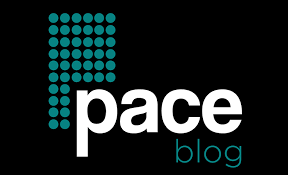Programmatic advertising is a useful tool in modern marketing. At minimal cost, it allows a business to get excellent results in increasing visibility in the online space. If you are interested in running programmatic advertising and want to know about an ad server, RTB meaning, and other important concepts, this article is for you.

What is Programmatic Advertising?
Programmatic advertising is an automated way to purchase advertising impressions with precise targeting. Instead of a webmaster who negotiates with the owner of the advertising platform and discusses the price, robots buy traffic.
If a webmaster negotiates with a site and buys space on the site for his advertising, then he pays for all the site’s traffic. Programmatic operates more precisely: using this scheme, the webmaster buys impressions only to the audience he needs, matching the parameters. Moreover, in real time and automatically. He does not need to communicate with site owners, discuss prices, and sign contracts. The robot does this.
Algorithmic advertising purchasing is also available on social networks, but programmatic advertising is a more advanced system with targeting.
How the Programmatic Advertising System Works
Let’s look at the participants in advertising relationships using the programmatic method. On the one hand, these are systems that represent the interests of advertising platforms, on the other, systems that select profitable placements for advertisers.
Platforms With Traffic – Offer
A system called SSP (supply side platform) accumulates offers in the advertising market. The system collects sites that sell their traffic and connects to the demand side for sales.
Advertisers – Demand
On the demand side, there is a DSP (demand side platform) – a system that purchases traffic. The system’s capabilities include setting up campaigns: loading creatives, setting up targeting, and automatic optimization based on KPIs. The algorithm is responsible for conducting auctions for advertising impressions.
Additionally, there is an ATD (Agency Trading Desk) system for setting up advertising purchasing parameters. In ATD, advertisers specify requirements for the parameters of the target audience and set budget limits and cost per click.
The agent participates in the auction. It compares the advertising purchasing parameters set by the advertiser and information from other platforms, selecting suitable options. Such agencies usually work for a percentage of placement or a subscription fee.
Analytical Systems – Data Management
To collect and process data, separate DMP (data management platform) systems are needed. They collect information about users and divide them into segments based on different parameters to target campaigns. The system can collect segments at the request of the advertiser and store data on advertising campaigns. Based on this data, the demand-side DSP understands which impressions the advertiser should buy.
Typically, they work according to this scheme: they provide audience segments that the advertiser needs, and receive a commission from each impression using their information.
Exchanges – Organization of Trading
Exchanges (Ad Exchange) usually act as intermediaries between supply and demand. When purchasing advertising directly, the price may be negotiable, unlike prices on exchanges. They are determined based on many factors.
The presence of several participants in a programmatic advertising scheme does not mean that several services must be used to make a purchase. Typically, all the functionality needed for trading is available in one platform.
How Does Real-Time Trading Work?
The most common method is real-time transactions, RTB (Real-time bidding). Purchase advertising automatically through bidding at an auction.
Let’s look at the meaning of RTB in more detail. So, the sites provided their advertising capabilities, which conduct auctions, and advertisers indicated the requirements for the parameters of the target audience and set budget and bid limits.
How advertising is purchased:
- The user clicks on a page on a website that is connected to programmatic.
- At this time, the site sends a signal that the user can be shown a banner and sends their targeting data collected from a cookie, pixel tag, browser, or social network account.
- The platform where the sites are collected (SSP) receives information about the characteristics of this user, uses them to select companies that are interested in him, and creates an auction. At the same time, the site that provides advertising space can create its own ignore list of advertisers; they will not participate in the auction for advertising on its site.
- Algorithms make bids based on the limits that sites have set, and with the help of DSP, the bid information is sent to the SSP.
- The system analyzes bids and selects the advertiser with the highest.
- The system receives an advertising banner from the auction winner and transmits it to the user’s browser.
- The site page loads and the user sees an advertisement.
The process is automated, milliseconds are spent on each item. While the page is loading, the auction will take place and the desired advertisement will appear. As a result, only the right audience sees the ad at the right time. The advertiser can analyze campaigns in detail and immediately adjust bids and audience settings.
RTB is one of the automated ad buying models. There are others, for example:
- Programmatic Direct – using this model, advertising spaces are also purchased automatically, but directly, bypassing the exchange without an auction.
- Preferred Deals – without auctions, the advertiser pays a fixed price for using advertising space.
- Private Marketplace – the scheme is the same as in real-time auctions, but participation in the auction is by invitation only.
Why Should You Try Programmatic Advertising?
If you are looking to run successful advertising campaigns, then you should definitely try programmatic advertising as it offers a lot of benefits:
Precise Targeting
Programmatic bidding is carried out for each user based on detailed targeting. An advertiser can search for an audience based on socio-demographic data, interests, and preferences based on cookies and other sources, which makes segmentation more accurate.
Transparent Pricing
Typically, platforms set their own prices and it was necessary to negotiate, but on the exchange, pricing depends on technological factors. Advertisers pay only for impressions, and immediately relevant ones.
Sometimes at an auction, you can buy traffic from popular sites at a lower price than if you cooperate directly.
Fast Purchasing Process
The process of buying traffic becomes shorter due to the robotic approach. There is no need to agree on terms with managers, the algorithm does everything itself according to the settings, and trading lasts while the page is loading.
Detailed Campaign Management
The advertiser controls the audience, and sites and sees statistics in real-time, so he can immediately make adjustments or trust automatic adjustments according to parameters.

Conclusion
Before using programmatic advertising, an advertiser needs to prepare: analyze the audience so that targeting can be more accurately adjusted, conduct several tests, during which they observe the dynamics of indicators, and track how forecasts come true. If you want to go even deeper into what RTB means and everything related to programmatic advertising, we recommend visiting the SmartyAds website.

